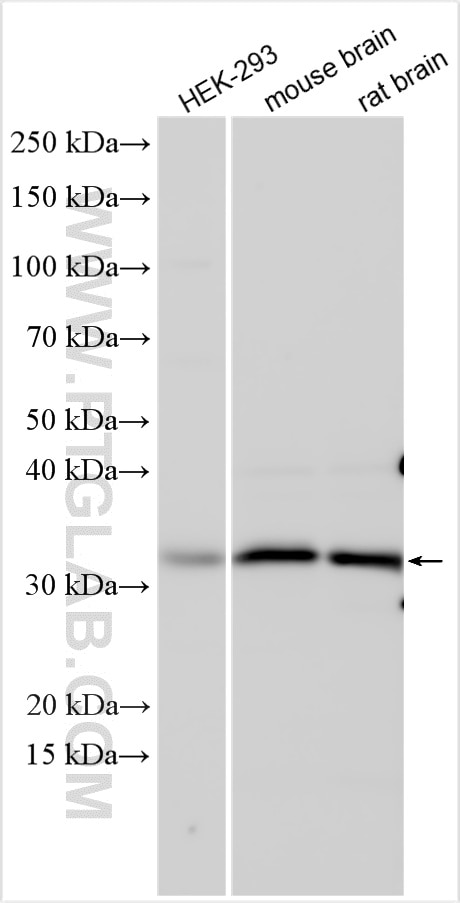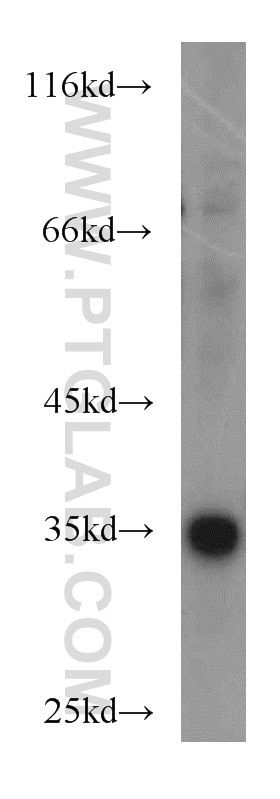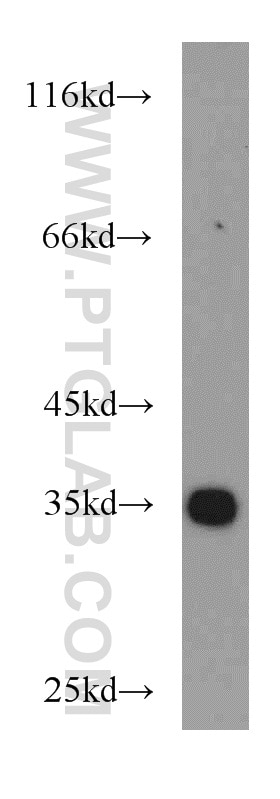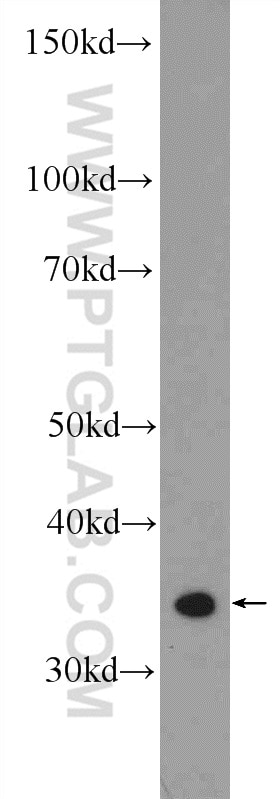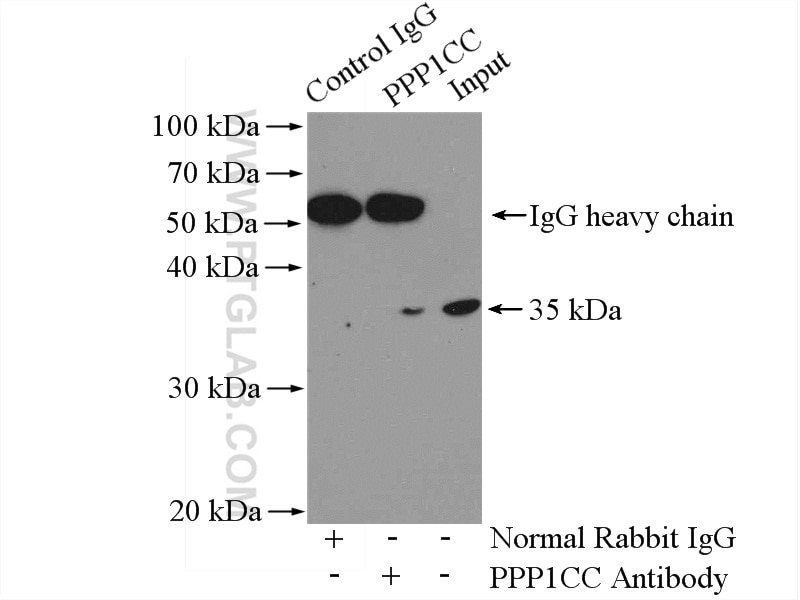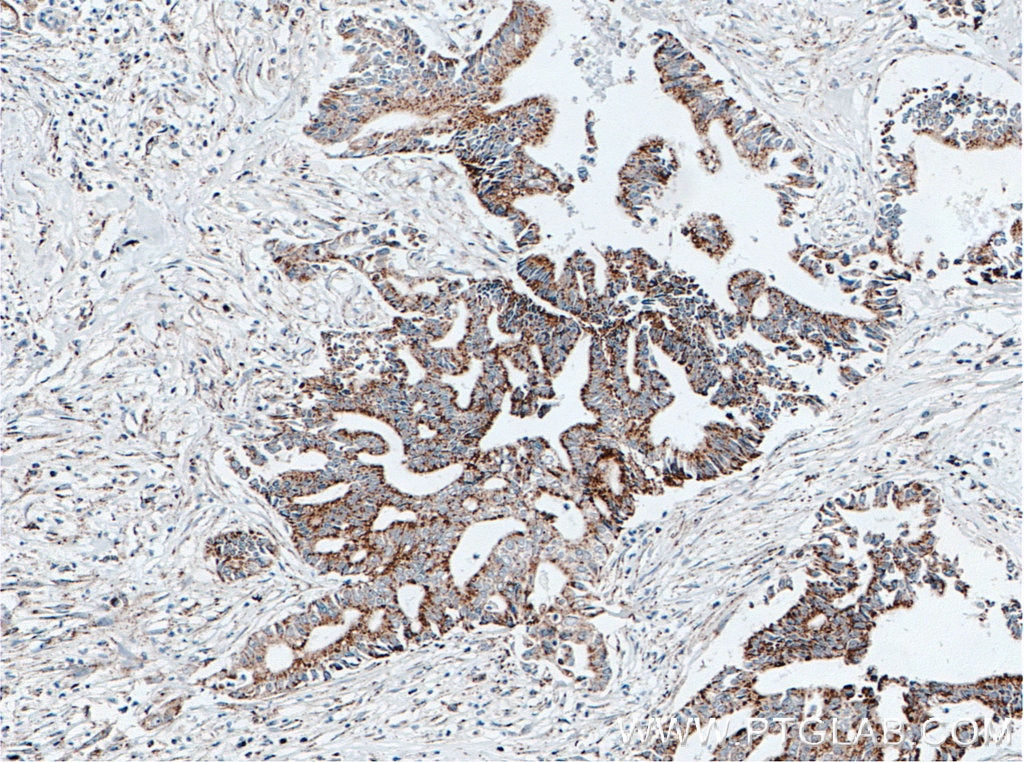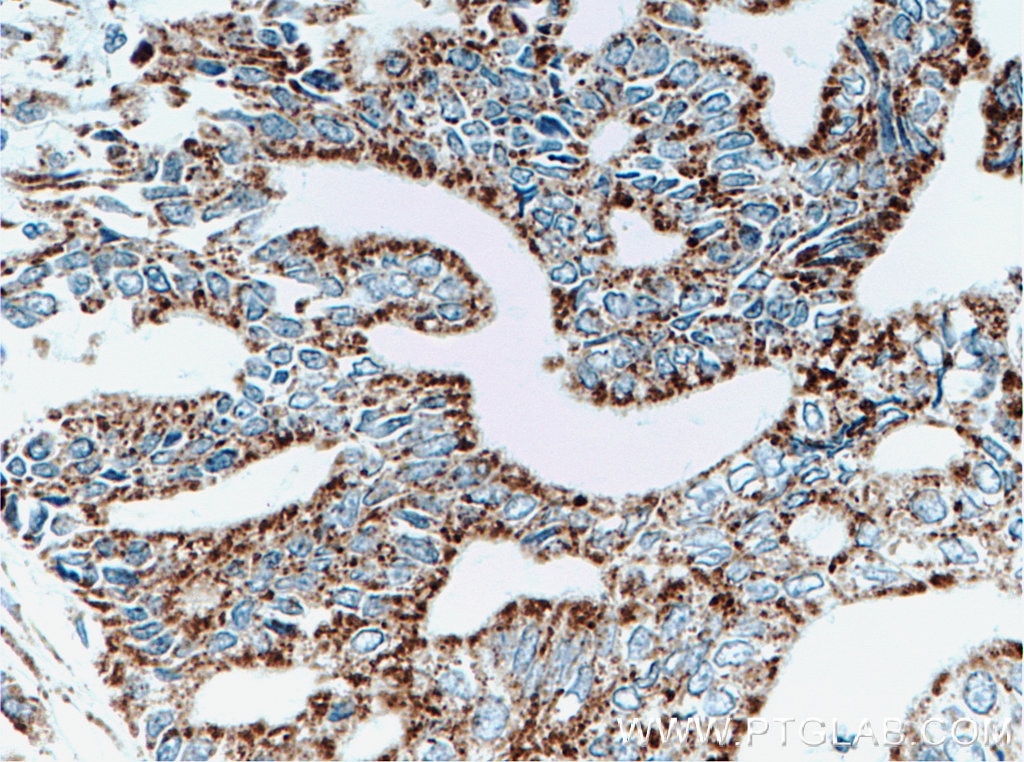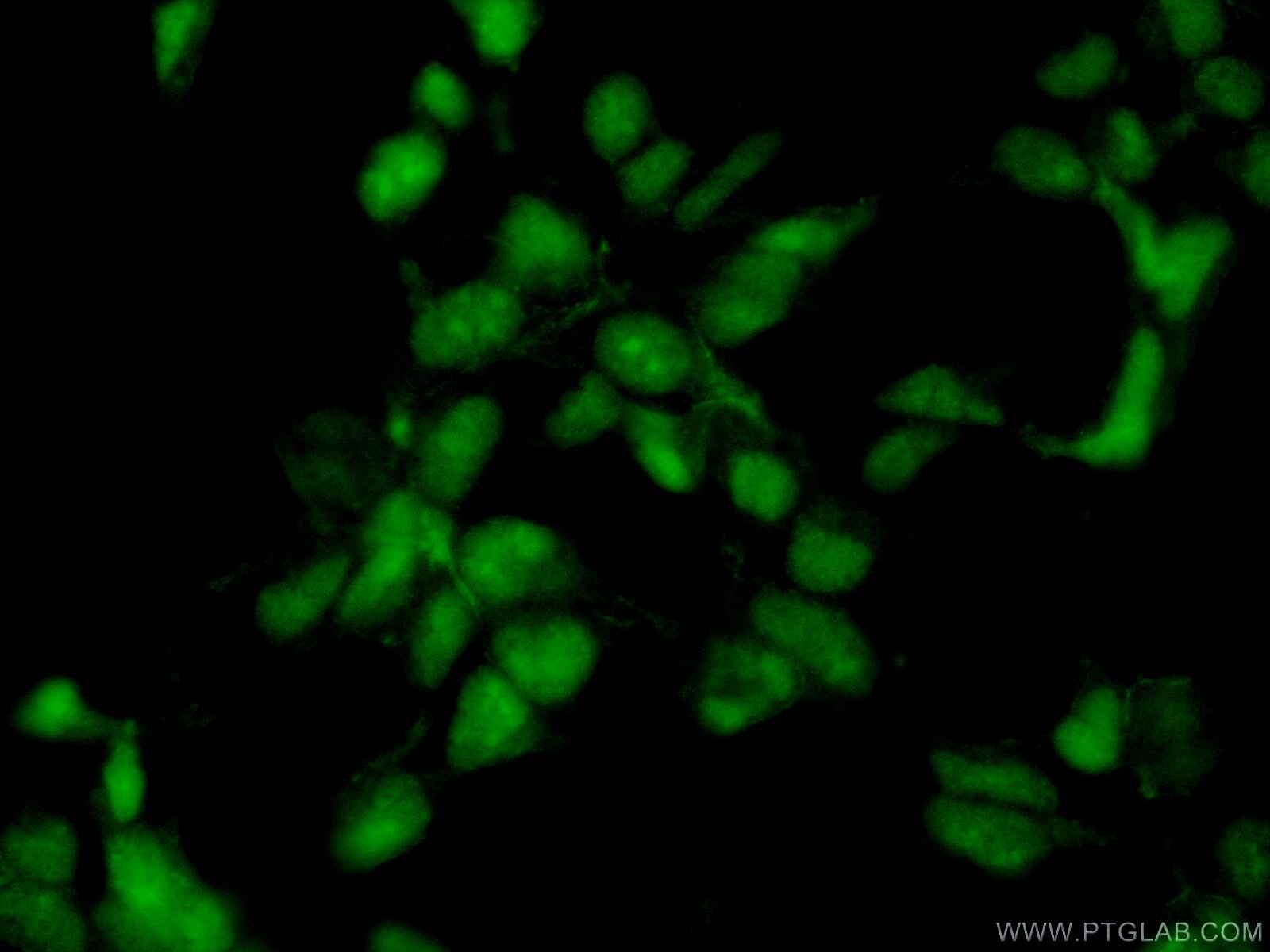Tested Applications
| Positive WB detected in | HEK-293 cells, MCF-7 cells, L02 cells, HEK-293T cells, mouse brain tissue, rat brain tissue |
| Positive IP detected in | HEK-293 cells |
| Positive IHC detected in | human pancreas cancer tissue Note: suggested antigen retrieval with TE buffer pH 9.0; (*) Alternatively, antigen retrieval may be performed with citrate buffer pH 6.0 |
| Positive IF/ICC detected in | HEK-293 cells |
Recommended dilution
| Application | Dilution |
|---|---|
| Western Blot (WB) | WB : 1:2000-1:16000 |
| Immunoprecipitation (IP) | IP : 0.5-4.0 ug for 1.0-3.0 mg of total protein lysate |
| Immunohistochemistry (IHC) | IHC : 1:50-1:500 |
| Immunofluorescence (IF)/ICC | IF/ICC : 1:50-1:500 |
| It is recommended that this reagent should be titrated in each testing system to obtain optimal results. | |
| Sample-dependent, Check data in validation data gallery. | |
Published Applications
| KD/KO | See 2 publications below |
| WB | See 8 publications below |
| IP | See 3 publications below |
Product Information
11082-1-AP targets PPP1CC in WB, IHC, IF/ICC, IP, ELISA applications and shows reactivity with human, mouse, rat samples.
| Tested Reactivity | human, mouse, rat |
| Cited Reactivity | human, mouse, rat |
| Host / Isotype | Rabbit / IgG |
| Class | Polyclonal |
| Type | Antibody |
| Immunogen |
CatNo: Ag1550 Product name: Recombinant human PPP1CC protein Source: e coli.-derived, PGEX-4T Tag: GST Domain: 1-323 aa of BC014073 Sequence: MADLDKLNIDSIIQRLLEVRGSKPGKNVQLQENEIRGLCLKSREIFLSQPILLELEAPLKICGDIHGQYYDLLRLFEYGGFPPESNYLFLGDYVDRGKQSLETICLLLAYKIKYPENFFLLRGNHECASINRIYGFYDECKRRYNIKLWKTFTDCFNCLPIAAIVDEKIFCCHGGLSPDLQSMEQIRRIMRPTDVPDQGLLCDLLWSDPDKDVLGWGENDRGVSFTFGAEVVAKFLHKHDLDLICRAHQVVEDGYEFFAKRQLVTLFSAPNYCGEFDNAGAMMSVDETLMCSFQILKPAEKKKPNATRPVTPPRGMITKQAKK Predict reactive species |
| Full Name | protein phosphatase 1, catalytic subunit, gamma isoform |
| Calculated Molecular Weight | 35 kDa |
| Observed Molecular Weight | 35 kDa |
| GenBank Accession Number | BC014073 |
| Gene Symbol | PPP1CC |
| Gene ID (NCBI) | 5501 |
| RRID | AB_2168085 |
| Conjugate | Unconjugated |
| Form | Liquid |
| Purification Method | Antigen affinity purification |
| UNIPROT ID | P36873 |
| Storage Buffer | PBS with 0.02% sodium azide and 50% glycerol, pH 7.3. |
| Storage Conditions | Store at -20°C. Stable for one year after shipment. Aliquoting is unnecessary for -20oC storage. 20ul sizes contain 0.1% BSA. |
Background Information
PPP1CC, also named as PP-1G, belongs to the PPP phosphatase family and PP-1 subfamily. Protein phosphatase 1 (PP1) is essential for cell division, and participates in the regulation of glycogen metabolism, muscle contractility and protein synthesis. It is involved in regulation of ionic conductances and long-term synaptic plasticity. PPP1CC may play an important role in dephosphorylating substrates such as the postsynaptic density-associated Ca2+/calmodulin dependent protein kinase II.
Protocols
| Product Specific Protocols | |
|---|---|
| IF protocol for PPP1CC antibody 11082-1-AP | Download protocol |
| IHC protocol for PPP1CC antibody 11082-1-AP | Download protocol |
| IP protocol for PPP1CC antibody 11082-1-AP | Download protocol |
| WB protocol for PPP1CC antibody 11082-1-AP | Download protocol |
| Standard Protocols | |
|---|---|
| Click here to view our Standard Protocols |
Publications
| Species | Application | Title |
|---|---|---|
EMBO J Mitochondrial outer membrane integrity regulates a ubiquitin-dependent and NF-κB-mediated inflammatory response | ||
J Biol Chem Dephosphorylation activates the interferon-stimulated schlafen family member 11 in the DNA Damage Response. | ||
Am J Physiol Cell Physiol PP1γ functionally augments the alternative splicing of CaMKIIδ through interacting with ASF. | ||
Clin Exp Pharmacol Physiol Rescue of cardiac failing and remodeling by inhibition of PP1γ is associated with suppression of the ASF-mediated splicing of CaMKIIδ | ||
Cell Death Dis Direct conversion of human umbilical cord mesenchymal stem cells into retinal pigment epithelial cells for treatment of retinal degeneration | ||
Dev Cell Loss of RanGAP1 drives chromosome instability and rapid tumorigenesis of osteosarcoma
|
Reviews
The reviews below have been submitted by verified Proteintech customers who received an incentive for providing their feedback.
FH Jua (Verified Customer) (08-01-2018) |
|
